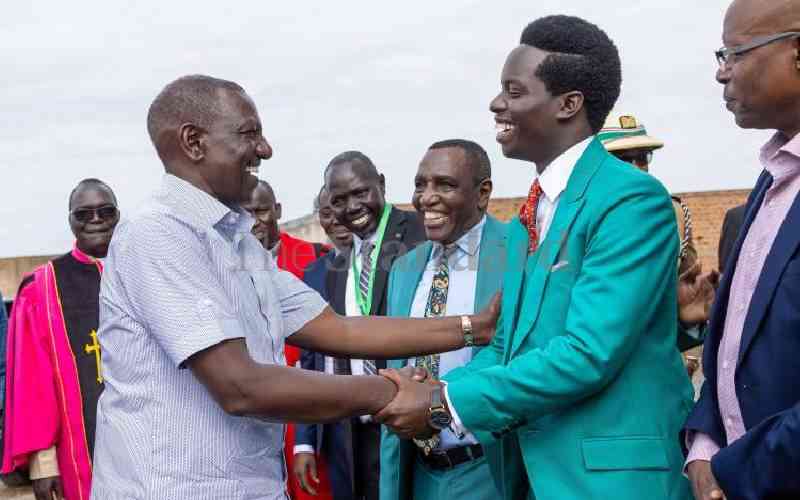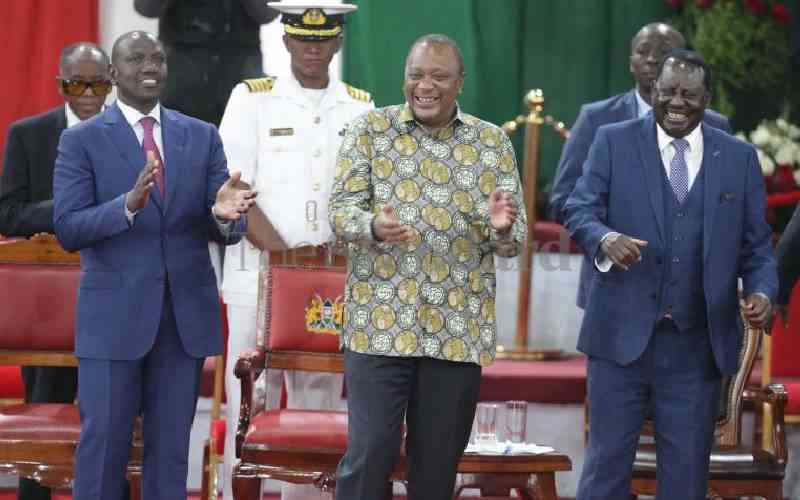
John F. Kennedy once said, “Leadership and learning are indispensable to each other” emphasising the fact that a leader has to keep learning new and relevant knowledge, unlearning outmoded knowledge and re-learning what has worked in the past or works within the circle of contemporaries.
The three attributes are the ingredients for innovation and change in the 21st Century.
It should be known that customers are looking for an organisation and by extension a leader willing to constantly translate ideas into good service that creates value in their lives.
Technology and globalisation have reduced the time to exert influence globally.
Market disruption
A firm in Europe, for example, is able to launch a product today and make it known to the whole world the same day, thus disrupting the market globally.
Further, we are now living in an egalitarian culture where unhappy customers are willing to tell you and others how they feel about your product, and thereafter jump to the competitor to test if their evolving tastes and preferences will be met.
This calls for a deftly structured organisation which is able to anticipate the changing needs of customers and also track possible disruptions by the competitor.
The above challenge introduces two key elements that a great leader should focus on: teamwork around innovation and research and development (R&D).
Many times, team building and teamwork are used interchangeably.
Outdoor bonding
An organisation hires a consultant to facilitate team building activities and everybody goes home satisfied imagining that “a winning team has just been birthed”.
While both are important, team building focuses on the formation of groups while teamwork concentrates on the functions of groups.
Team building should go beyond the outdoor bonding session or creating groups that embrace a culture of innovation that works towards meeting the insatiable needs of the customer.
Stay informed. Subscribe to our newsletter
A customer-centric and innovative culture in teams is not achieved overnight but has to be modeled by the leader from strategy formulation stage to execution and finally, at the performance evaluation stage.
One way of exhibiting to value teamwork is by formally recognising teams that drive research and development and also the informal teams that present raw innovative proposals for refinement and adoption.
Make the kitchen staff or the company driver, for example, know that they have a role in making the organisation competitive and that at the end of the year, an appraisal will recognise such efforts when determining bonus or promotion.
Make every staff believe that they are one of the key parts of the organisation’s transformation engine and include them in a team that supports the same spirit.
Without overemphasizing the importance of research and development, a 21st-century leader has to continually improve both natural and artificial engines that support the preservation and creation of knowledge to meet the evolving needs of customers.
The structures should aim at creating ideas that are replicable, economically within the reach of the target market and more importantly aid in timely decision making to meet a specific need.
In economics and business circles, the focus in on ‘cost-benefit analysis’ - the R&D teams should be put to task by the leader to demonstrate that there exists a customer willing to pay for the value.
- The writer is a professional in leadership and risk management strategies
 The Standard Group Plc is a
multi-media organization with investments in media platforms spanning newspaper
print operations, television, radio broadcasting, digital and online services. The
Standard Group is recognized as a leading multi-media house in Kenya with a key
influence in matters of national and international interest.
The Standard Group Plc is a
multi-media organization with investments in media platforms spanning newspaper
print operations, television, radio broadcasting, digital and online services. The
Standard Group is recognized as a leading multi-media house in Kenya with a key
influence in matters of national and international interest.
 The Standard Group Plc is a
multi-media organization with investments in media platforms spanning newspaper
print operations, television, radio broadcasting, digital and online services. The
Standard Group is recognized as a leading multi-media house in Kenya with a key
influence in matters of national and international interest.
The Standard Group Plc is a
multi-media organization with investments in media platforms spanning newspaper
print operations, television, radio broadcasting, digital and online services. The
Standard Group is recognized as a leading multi-media house in Kenya with a key
influence in matters of national and international interest.










